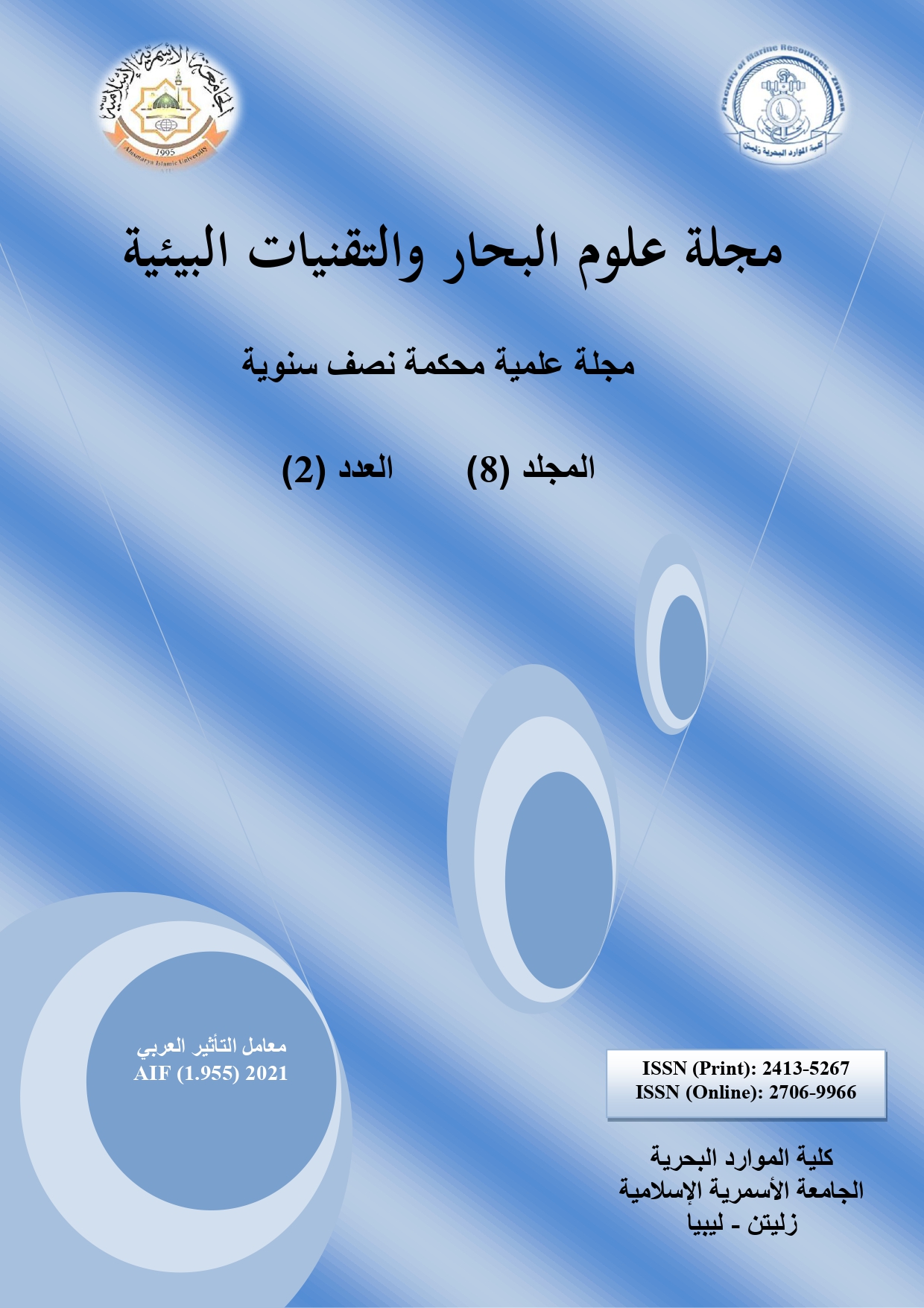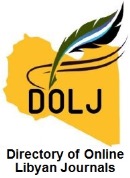دراسة لأهم المظاهر الجيومرفولوجية للسواحل البحرية بمناطق (الخمس، كعام، زليتن)، ليبيا
DOI:
https://doi.org/10.59743/jmset.v8i2.67الكلمات المفتاحية:
جيومرفولوجبا السواحل البحرية، الخمس، زليتن، كعام، المظاهر الجيومرفولوجية للسواحل البحريةالملخص
تضمنت الدراسة الحالية توثيق أهم المظاهر الجيومرفولوجية بمناطق محددة لسواحل مدن الخمس وكعام وزليتن الواقعة شرق مدينة طرابلس. تم استخدام كاميرا رقمية عالية الدقة من نوع Nokia وذلك لأجل الحصول على صور عالية الجودة. اشتملت الظواهر الجيومرفولوجية بمناطق الدراسة على نوعين رئيسيين وذلك حسب العمليات الجيولوجية التي أدت إلى نشأتها، الظواهر الناتجة بفعل الترسيب البحري (depositional features) والظواهر الناتجة بفعل عمليات النحت (erosional features)، تميزت سواحل مدينة الخمس في النقاط المدروسة بانبساطها وقلة ارتفاع الجروف المطلة عليها والتي تتلاشى في معظم الأحيان لتفتح المجال أمام منطقتي الشاطئ والبلاج فتصبح أكثر اتساعاً. أما سواحل منطقتي كعام وزليتن بالأخص فقد تميزت بانحدارها وقلة انبساطها نتيجة لتدرج منطقة الساحل واقتراب الجروف العالية الارتفاع لخط الساحل مما نتج عليه ضيق نطاق كل من الشاطئ والبلاج. كما أدى ارتفاع هذه الجروف وشدة انحدارها وتكوينها الصخري الهش والغير متماسك وشدة تأثير أمواج البحر وخاصة في فصول الشتاء إلى حدوث الانهيارات والانزلاقات وكذلك عمليات الزحف لهذه الجروف؛ الأمر الذي نتج عليه تراجعها وانتشار الكتل والفتاتات الصخرية عند أقدام هذه الجروف لتصبح عرضة لفعل التيارات البحرية والأمواج على نطاق الشاطئ أو البلاج. بصفة عامة، يمكن اعتبار سواحل مدينة الخمس سواحل بحرية منخفضة تغطيها الرمال والحصى الصغير وبعض الكثبان الرملية بينما يغلب على سواحل منقطتي كعام وزليتن المرتفعة (coasts of emergence) الغطاء الصخري (rocky beaches).
التنزيلات
المراجع
أولاً: المراجع باللغة العربية
محسوب، محمد صبري (1998). جيومرفولوجية الأشكال الأرضية. دار الفكر العربي للنشر، مصر.
ثانياً: المراجع باللغة الإنجليزية
Bird E. (2008). Coastal geomorphology: an introduction, 2nd ed. John Wiley & Sons Ltd, England.
Bourke M.C. and Viles H.A. (2007). A Photographic Atlas of Rock Breakdown Features in Geomorphic Environments. International Association of Geomorphologists. Working Group on Planetary Geomorphology, Planetary Science Institute, USA.
Davidson-Arnott R. (2010). An Introduction to Coastal Processes and Geomorphology. Cambridge University Press, New York, USA.
Davis R.A. and Fitz G.D. (2004). Beaches and Coasts. Blackwell Publishing, Australia.
Mann K. (1975). Geological map of Libya, Explanatory Booklet Sheet. Misuratah, NI 33-15, Libyan Arab Republic, Industrial Research Center, Tripoli, Libya.
Nagel R. (2003). Encyclopedia of Landforms and Other Geologic Features, Vol.1. U-X-L, Thomson, USA.
Pickrill R.A. (1977). Coastal processes, beach morphology, and sediments along the north-east coast of the South Island, New Zealand. New Zealand Journal of Geology and Geophysics, 20(1): 1–15.
Stephen P.L., Davison T.A., and Robert J.N. (1994). Coastal Geomorphology, Environmental Science in the Coastal Zone: Issues for Further Research. National Academies Press.
Woodroffe C.D. (2002). Coasts: form, process and evolution. Cambridge University Press, UK.
التنزيلات
منشور
إصدار
القسم
الرخصة
الحقوق الفكرية (c) 2022 مجلة علوم البحار والتقنيات البيئية

هذا العمل مرخص بموجب Creative Commons Attribution 4.0 International License.












